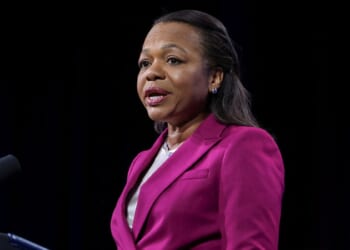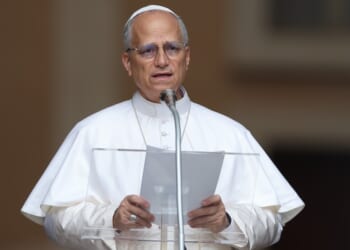American families are paying significantly more for beef at the checkout counter—over 75 cents per pound more in September than they were in January. President Donald Trump thinks he has a plan to solve these higher prices: more government intervention.
On Friday, Trump called out “Majority Foreign Owned Meat Packers” for artificially inflating prices and jeopardizing the security of the American food supply in a Truth Social post. The president said he’d sic the Justice Department on meat packers to investigate them for “driving up the price of Beef through Illicit Collusion, Price Fixing, and Price Manipulation.”
In a statement accompanying Trump’s post, the White House named JBS, Cargill, Tyson Foods, and National Beef as the “Big Four” meat packers who comprise 85 percent of the market and would be subject to a Justice Department investigation. While JBS S.A. is a Brazilian company and Brazilian Marfrig Global Foods has a controlling stake in National Beef, Cargill is the largest privately owned company in the U.S., and most of Tyson Foods’ public shares are owned by a combination of American institutional investors and the Tyson Limited Partnership.
The White House emphasizes that the Big Four “dominate” the U.S. beef processing market, citing a 2024 report by the Agriculture Department that found “the four largest firms [handle] 85 percent of all steer and heifer purchases.” Whereas, “in 1980, the four largest beef packers accounted for 36 percent of all purchases of steers and heifers.” Taken at face value, these data seem to support the claim that meat packers have “violated antitrust laws through coordinated pricing or capacity restrictions.” Upon further examination, they belie it.
After accounting for 36 percent of meat packing in 1980, these firms controlled roughly 80 percent of the market by 1993, and about 85 percent since 2010. From January 1984 (the earliest date for which data are available) to January 1993, the average price per pound of ground beef increased from $1.29 per pound to $1.57 per pound, according to the Federal Reserve Bank of St. Louis. This means that the 44 percentage-point increase in four-firm concentration in the meat packing industry from 1980 to 1993 was associated with only a 22 percent nominal price increase of ground beef. It would take another decade for the price of ground beef to rise by less than 50 cents and reach $2 per pound in August 2003. After some price fluctuations, beef prices began steadily climbing in December 2010 and rose markedly from an average of $3.95 per pound in December 2020 to $5.55 per pound in January.
If these four companies are colluding to set the price of beef, why did they wait more than 30 years to “criminally [profit] at the expense of the American People,” as Trump accuses?
Like many of Trump’s theories about the economy and affordability, a more plausible and nuanced explanation exists. Since December 2020, the U.S. has seen a plummeting supply of beef cattle in part due to drought and higher import costs. In July 2020, there were 32.1 million head of beef cows; in July 2025, that number had decreased by 10.6 percent to 28.7 million head. In August, the Agriculture Department revised its 2026 beef production forecast downward by 345 million pounds, “representing a 2 percent year-over-year decline.”
The Agriculture Department also revised its beef import projections for the rest of 2025 and 2026 in expectation of “limited imports from Brazil.” Brazilian beef made up a full quarter of beef imports from January to June of this year, so slapping a 50 percent tariff on Brazilian imports in August was not the brightest idea if lowering beef prices is the objective.
Trump has expressed concern that American ranchers are being improperly blamed for high meat prices at the checkout counter. To ascribe blame for the recent uptick in meat prices to four-firm concentration in the meat packing industry is unconvincing at best and, at worst, a deliberate smokescreen for his restrictionist trade policies that have exacerbated the problem.















